New design: Plan B for Feyenoord, though not official
source: StadiumDB.com; author: michał
 With dark clouds thickening over Feyenoord City, the €1 billion project could theoretically collapse over the ongoing pandemic. Should that happen, there's a new proposal of how the old De Kuip could be reinvented.
With dark clouds thickening over Feyenoord City, the €1 billion project could theoretically collapse over the ongoing pandemic. Should that happen, there's a new proposal of how the old De Kuip could be reinvented.
Advertisement
On April 9 the public consultation period for Feyenoord City has concluded. There's no official summary of voices received, but it's clear that there's both support and significant opposition to the scheme proposing Feyenoord's relocation just a few hundred meters north.
While a world-class stadium partly built on water sounds very appealing to some, others would rather see the iconic and historically-valuable De Kuip used further as a football temple. Also, some of local residents have concerns of their own over what is a €1 billion scheme (of which €444 million would cover the stadium).
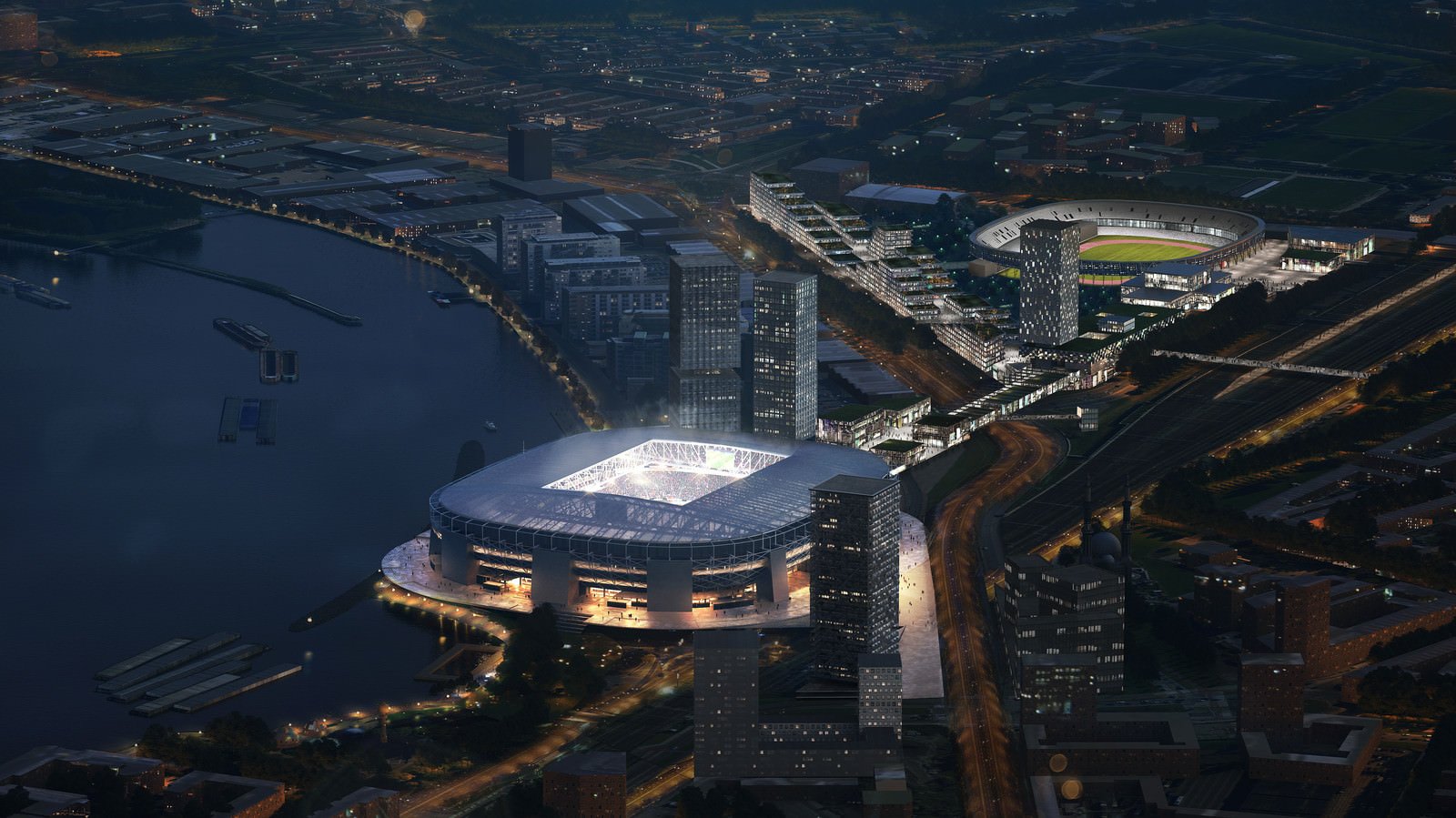 © OMA
© OMA
Formally the project is still ongoing along schedule. That is, along the updated schedule that would see the new stadium delivered in 2025, instead of unfeasible deadlines of 2022, 2023 and 2024. In early May the environmental permit application should be filed for what would only see groundbreaking in 2022.
But now, with the COVID-19 pandemic ongoing, uncertainty over the entire scheme is growing. Crucially, both Feyenoord and Stadion Feijenoord have already been badly hit by the football and event crisis, both losing their revenue streams within a day.
It remains to be seen how they both weather the storm, but it's already being mentioned that public support might be necessary. Meanwhile, Stadion Feijenoord is already heavily endebted particularly for the development of Feyenoord City.
Plan B surfacing at the right time?
Just as the public consultation period was ending, a fresh and independent vision was launched. Though introduced during the pandemic, De Moderne Kuip has been under development since mid-2019. It involves a number of high-profile companies like architects Molenaar & Co., West 8, EGM Architecten, ABT, as well as agencies like Octatube and Hypercube. Known as Consortium De Moderne Kuip, the ensemble includes entrepreneurs like Erwin Ekelaar and real estate mogul Aat van Herk.
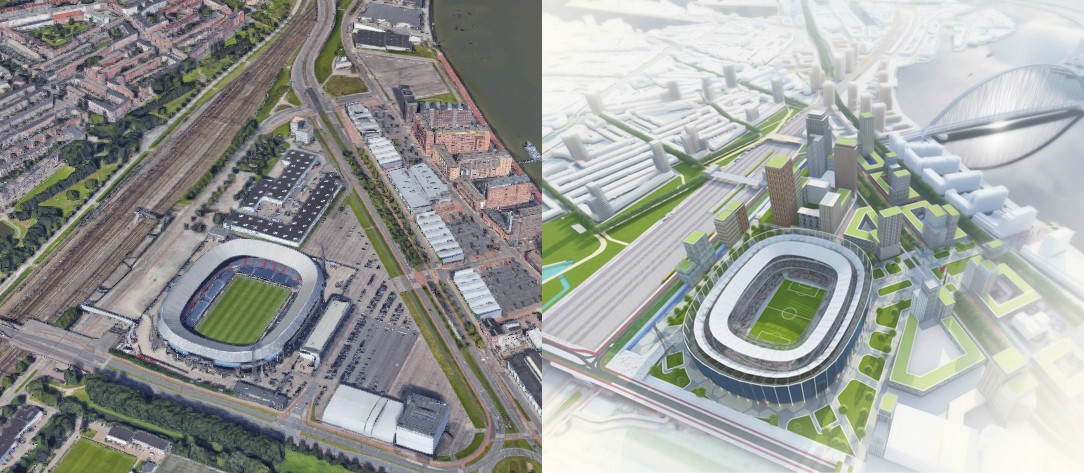
The scheme in entirely independent from official effort and aims at being an alternative, should the more ambitious plan fall through for any reason and the idea of upgrading De Kuip once more became viable. It's a much cheaper programme than Feyenoord City (stadium cost of €200 million compared to €444 million), which has the advantage of salvaging the iconic De Kuip for football use.
Interestingly, De Moderne Kuip would do to the old stadium what it does to its name: include the historical part within a modern form. Not only the monument-listed grandstands from 1937 would be preserved, but also the roof added in 1994. The cover would be lifted from place and incorporated into a much larger new roof in a unique piece of engineering. Even more, despite the stadium's size not needing it, the free-standing floodlight masts would be retained, albeit being moved further away to make room for expansion.
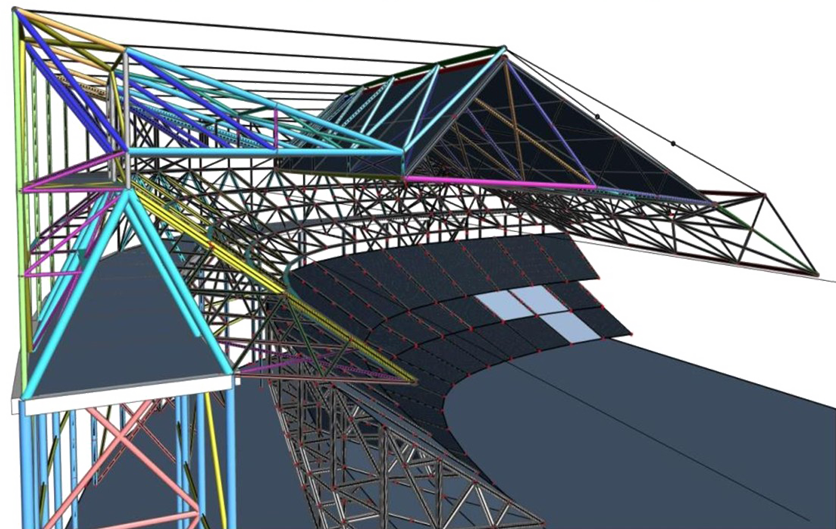
In order to increase capacity from 51,000 to 63,000, a new third ring of seating would be created on top of the existing auditorium, technically and aesthetically i line with the old steel skeleton. It would be erected on a brand new structure built outside of the existing ground. Expanding outwards means additional room for floor spaces, including HoReCa uses, a total of 70,000 square meters.
Despite very limited ingeration into the historical stands (only part of the lower ring would be replcaed with boxes and lounges), the stadium would still meet international standards in terms of hospitality, offering roughly 10% to business guests (6,250 seats plus private spaces, totalling 6,500 m2). This could, according to its proponents, provide even greater matchday revenue leap than Feyenoord City despite much lower spending.
De Moderne Kuip is the most advanced De Kuip revamp proposal in terms of masterplanning for the surrounding area, particularly the 'triangle' (15 hectares) in which the stadium sits. It would house numerous new uses, predominantly housing and commerce. Meanwhile, dropping the Feyenoord City project would mean a better position for new bridge across Nieuwe Maas, enabling a tram connection through it and boosting public transport use on matchdays.
Advertisement
 StadiumDB
StadiumDB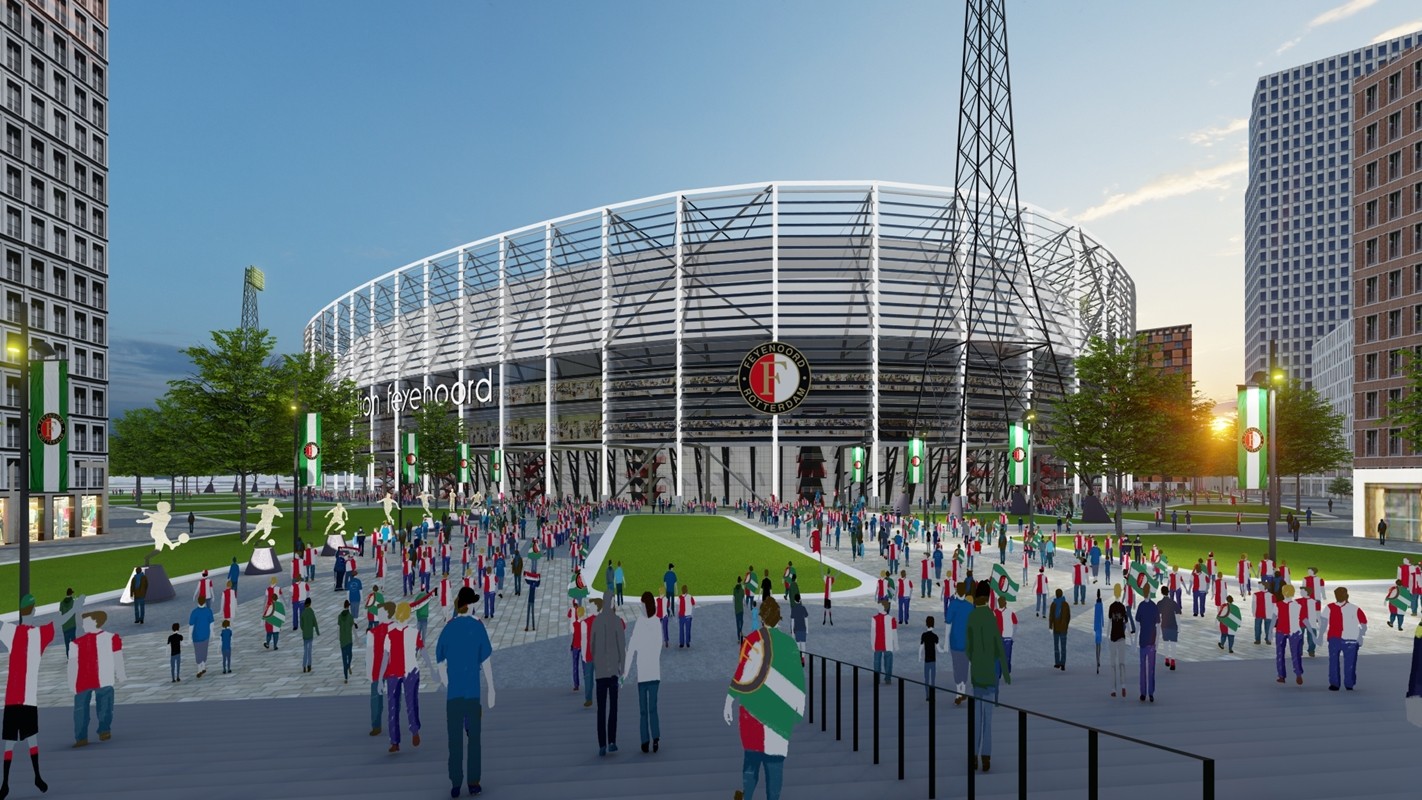 ©
©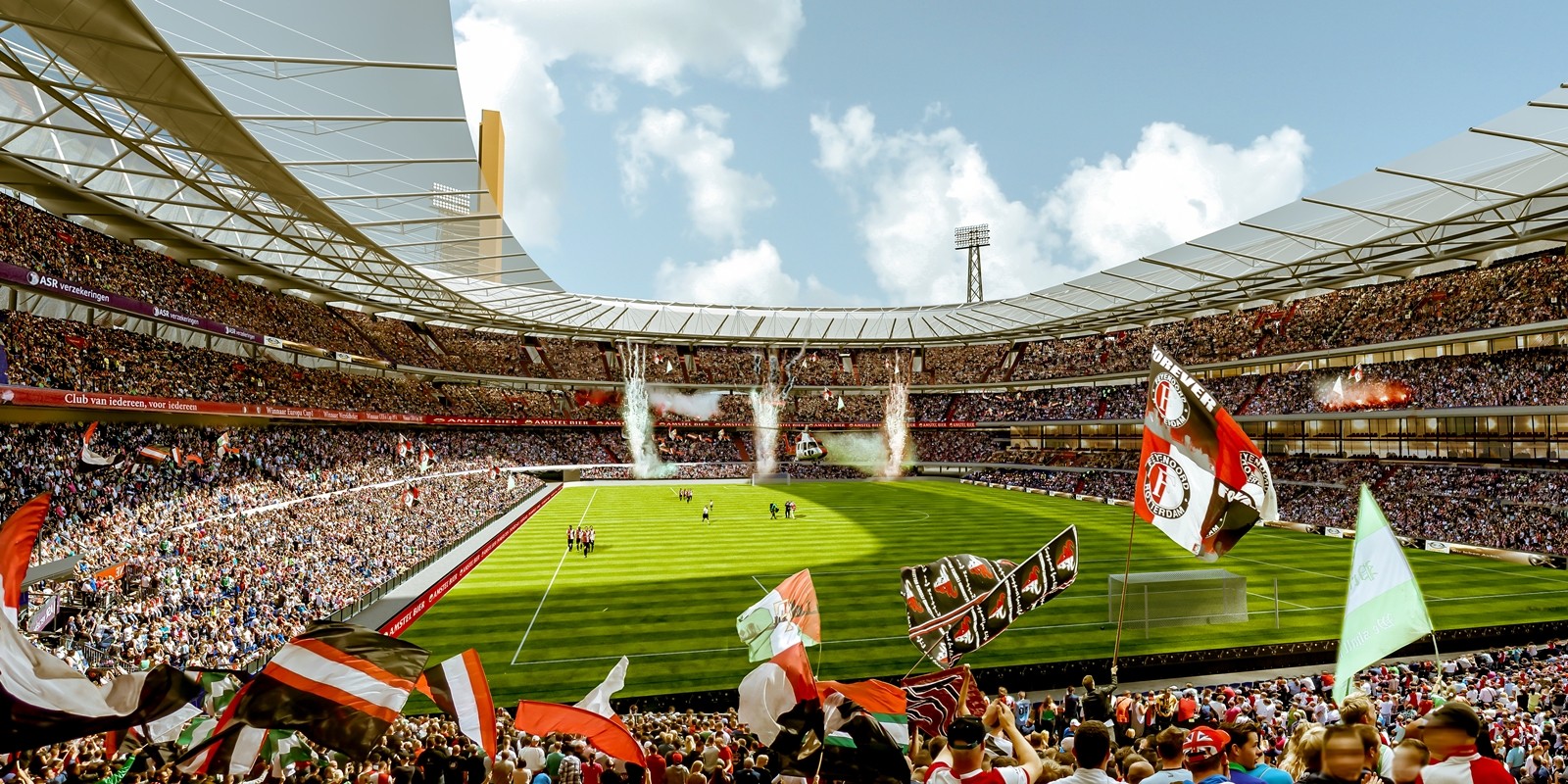 ©
©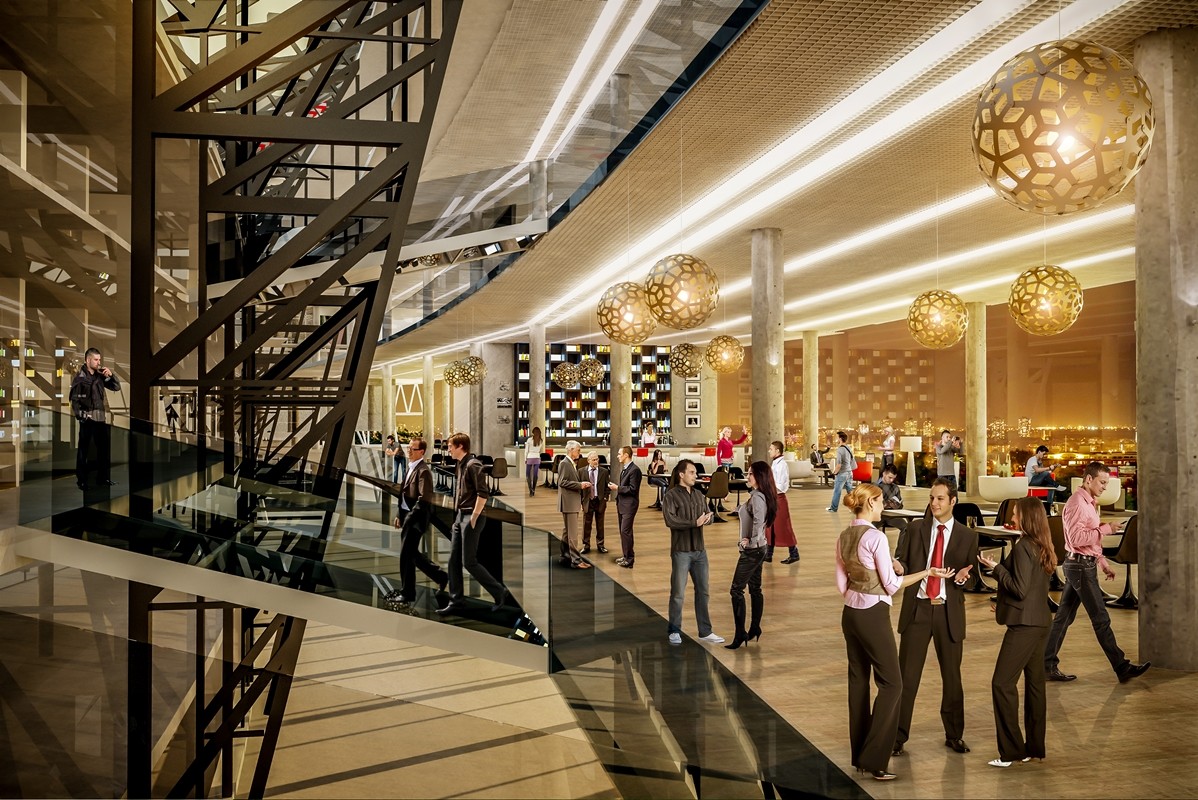 ©
©